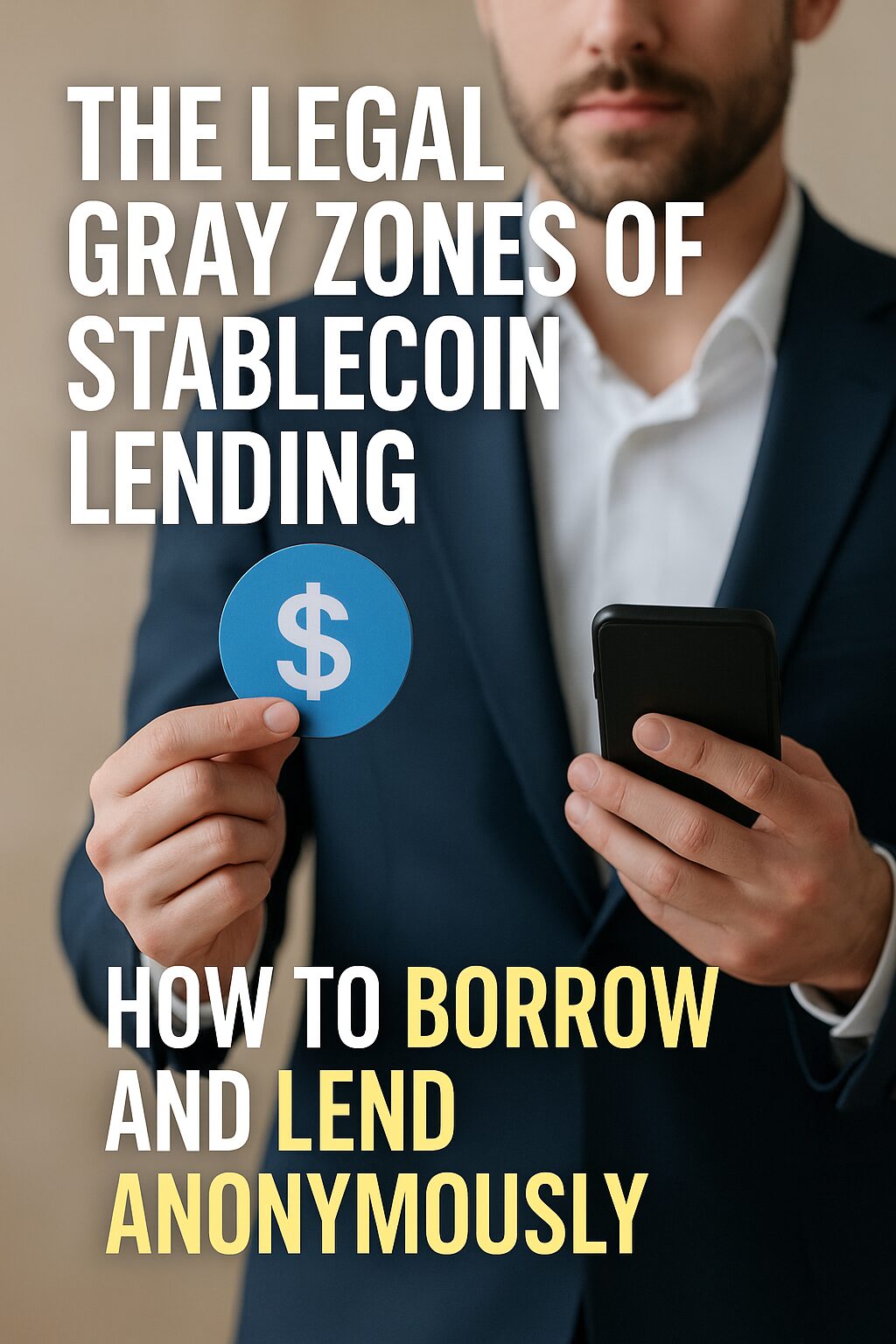Stablecoin lending has emerged as one of the most popular use cases in decentralized finance (DeFi). It allows users to earn passive income or access liquidity without selling their assets. But while the technology is efficient, the legal environment is still unclear.
Unlike traditional financial systems, many lending protocols operate in a legal gray zone. What does it mean to lend or borrow anonymously using stablecoins? Is it legal? And what are the risks? This article explores the current landscape of anonymous stablecoin lending, the platforms involved, and how savvy users navigate legal uncertainty.
How Stablecoin Lending Works
In a typical lending setup:
- Lenders deposit stablecoins (e.g., USDC, USDT, DAI) into a liquidity pool.
- Borrowers provide crypto collateral (ETH, BTC, etc.) and receive stablecoins in return.
- Interest is paid to the lender automatically via smart contracts.
There are two types of platforms:
- Decentralized (DeFi) – No KYC, governed by DAOs (e.g., Aave, Compound)
- Semi-centralized – Require registration or partial KYC (e.g., Nexo, YouHodler)
All of this happens without banks, paperwork, or waiting periods.
Legal Classification: What Is Stablecoin Lending?
Governments and regulators around the world interpret lending differently:
- Currency vs. Security: Some countries treat stablecoin lending as an investment product, subject to securities laws.
- Deposit Regulation: Others classify it as a deposit-taking activity, requiring licensing.
- Money Lending Laws: In some jurisdictions, individuals lending crypto could be considered financial service providers.
United States: The SEC has targeted platforms for offering “unregistered securities.”
European Union: MiCA is introducing oversight over lending protocols.
Asia: Regulations vary widely — from full bans (China) to innovation zones (Singapore).
Why Anonymity Still Matters
Lending anonymously allows users to:
- Preserve financial privacy
- Avoid surveillance-based discrimination or blacklisting
- Reduce exposure to state-level censorship or unjust asset freezes
- Distribute risk across pseudonymous wallets
In countries with authoritarian controls or high inflation, this is more than convenience — it’s survival.
Top Platforms Supporting Anonymous or Low-KYC Lending
| Platform | KYC Required? | Notes |
|---|---|---|
| Aave | No | Fully decentralized, DAO-based |
| Compound | No | Open access lending pools |
| JustLend | No | TRON-based, fast and low fees |
| Venus | No | BNB Chain, supports multiple assets |
| Nexo | Yes | Regulated but transparent terms |
| YouHodler | Yes | High interest but centralized |
For full anonymity, decentralized platforms are preferred. However, they also carry higher smart contract risks.
Risks of Operating in the Gray Zone
While anonymity provides benefits, it also comes with notable risks:
- Regulatory Crackdowns: Some countries may retroactively ban or penalize anonymous lending.
- Frozen Funds: Smart contract exploits or emergency governance votes can lock your funds.
- Loss of Recourse: Anonymous users have no legal protection in disputes.
- Volatility and Over-collateralization: A small price drop can liquidate your position.
Users must weigh freedom against legal and financial risk.
How to Lend and Borrow Anonymously – Safely
To operate in this space with minimal risk:
- Use non-custodial wallets like MetaMask, Rabby, or Trust Wallet
- Route access through VPNs to mask IP address
- Borrow in small amounts across multiple wallets
- Use cold wallets to store unused funds securely
- Avoid platforms that require emails, IDs, or personal info
- Monitor smart contract audits and DAO governance updates
Security-conscious lenders also avoid leaving large sums in single protocols.
Conclusion – Privacy is a Right, But Strategy is the Key
Stablecoin lending is at the frontier of finance—faster, freer, and riskier. While regulators scramble to catch up, millions are already lending and borrowing anonymously across DeFi.
The key to success is not recklessness, but strategy: preserve privacy, stay informed, diversify, and always stay a step ahead of the system.
Your wealth deserves both freedom and protection—and in the legal gray zones, both must be earned.

